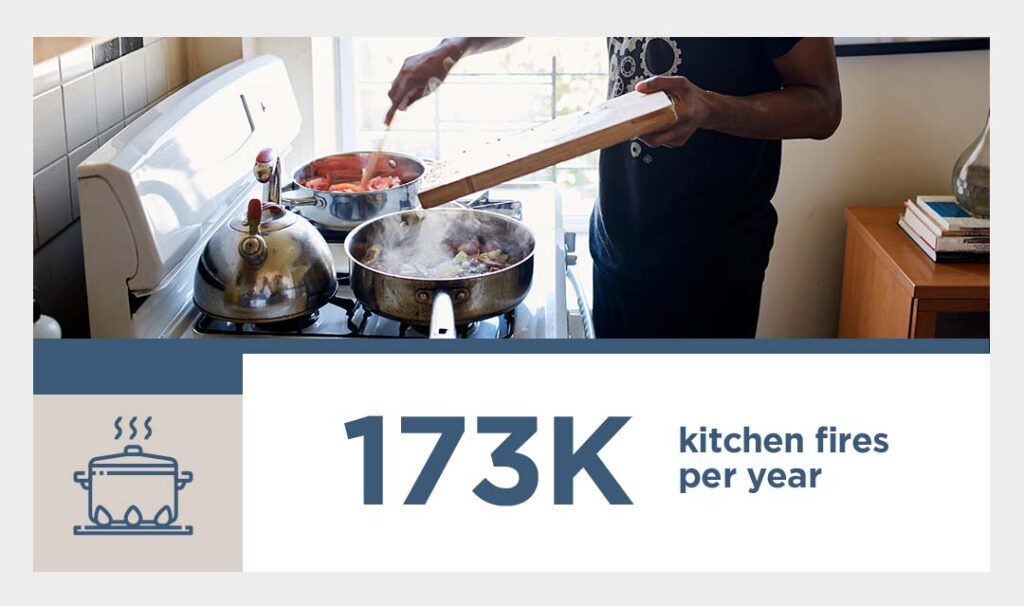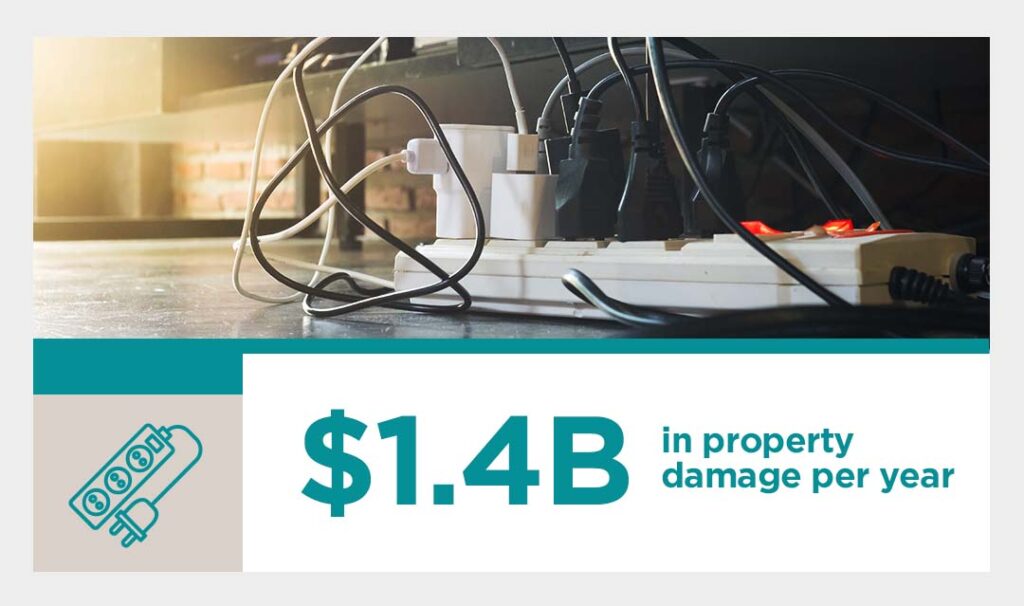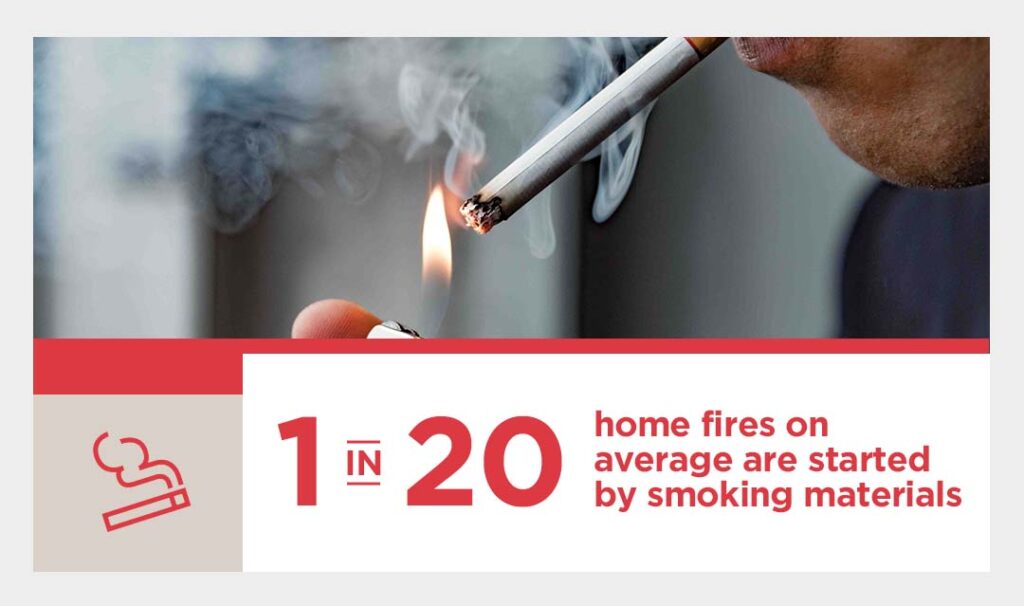Having extended family living under your roof — whether it’s just for a holiday or longer term — can bring the joys of reconnection, support and togetherness. But a full house is not without its challenges. There’s the potential for additional fire risk due to the habits, routines and electronic devices of those new to your nest. Whether your multi-generational household involves children returning home, parents moving in or both, there are several key things you can do to keep fire risk low while making the most of your family togetherness.
Cooking
Cooking is by far the leading cause of fires in American homes resulting in 44% of all home fire injuries. Older adults are more likely to be injured in cooking fires than those between the ages of 18 and 64. As you mix in additional cooks making more meals in different ways and at different times, the fire risk only increases. To keep a lid on the danger, make sure everyone:
- Knows how to properly use your cooking equipment
- Understands the importance of never leaving cooking food unattended
- Where to find a fire extinguisher should a fire occur

Heating Equipment
Keeping everyone in your house warm in cold months may create additional fire risk. This is particularly true if you’re using supplemental heating sources like:
- Fireplaces
- Wood burning stoves
- Portable heaters
Ensure that anyone using them knows how to operate and clean them properly. They also need to understand the importance of keeping anything that can burn at least three feet away. Make sure they also know to turn portable heaters off when leaving a room or going to bed.
Electrical
With added visitors come additional electronics and the inevitable scramble for outlet space. Fires from electrical distribution or lighting are the leading cause of home fire damage, with $1.4 billion in property damage on average each year. The threat of electrical fires is particularly great in older homes where the wiring systems may not be able to keep up with ever-increasing demands. Ask your guests to be careful not to:
- Run cords under carpeting, bedding or other combustible material
- Overload outlets
- Use extension cords in place of outlets
- Connect multiple extension cords
These unsafe methods create too much heat and can easily cause a fire.

Smoking
As smoking rates decreased, the reduced fire danger associated with smoking in the home has been an added health benefit. Although only one in 20 home fires on average are started by smoking materials, they cause almost a quarter of all fire-related deaths. More than 75% of those deaths occur in the living room or bedroom where people often fall asleep while smoking. And although people over age 65 make up only 15% of the population, they account for almost half of all smoking-related fire deaths. If members of your household do smoke, make sure they know how and where to do it safely — never in the presence of medical oxygen — and to properly extinguish their materials when done.

Candles
Candles are only responsible for 2% of home fires each year. However, they cause disproportional personal harm, with an injury rate roughly three times higher than other fires. Much of this added risk, as with smoking, is likely the result of people being asleep while a candle is burning. Make sure that lit candles are never left unattended and stress to everyone else under your roof the importance of not using candles at bedtime.

Most Important: Have an Emergency Plan
Adding to the fire danger in each of these areas is the human element: With more people in your home, there is the potential for new fire risk factors and added complexity to your existing emergency plans. Revisit your current fire escape plan and make sure it considers the abilities of every member of your household. Anyone who has a functional limitation that reduces the ability to escape quickly is at greater risk. Make sure everyone, particularly any children or grandchildren, knows what to do, including:
- How to get out
- How to call for help
- Where to safely regroup
Putting in a little time to be prepared now can prevent fire danger and save lives.
Protect Yourself, Your Family and Your Home
For more home fire safety information, download our free comprehensive guide:
Fire Sense: A Smart Way to Prevent, Detect and Escape Home Fires
A variety of National Fire Protection Association (NFPA) statistical and research reports about home or residential property fires during the period 2008 to 2020 were referenced in the writing of this article.
Read more: 10 Tips for a Fire-Safe Home







I really like looking through a post that will make people think. Also, thanks for allowing for me to comment!